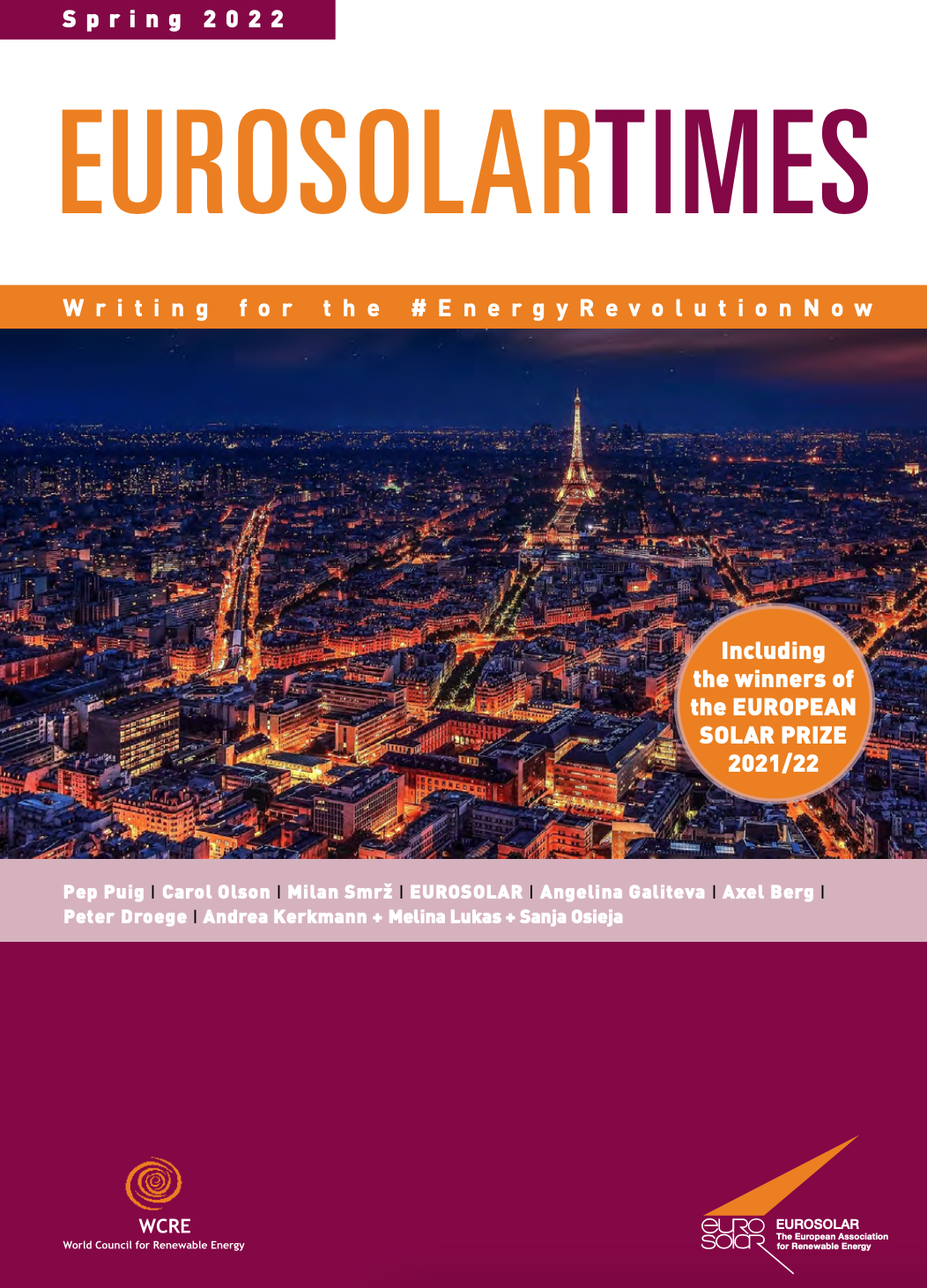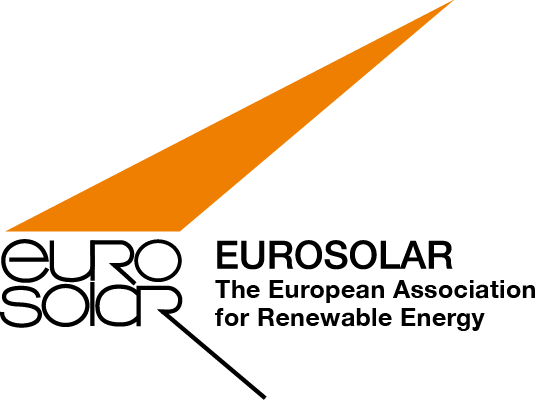Angelina Galiteva is a board member of the World Council for Renewable Energy, a founding board member of the Global Clean Energy Desalination Alliance, and founder and board chair of the Renewables 100 Policy Institute, which works to accelerate the global transition to 100% renewable energy. She is also the Chair of the Board of the California Independent System Operator and of CAISO.
I would like to talk to you about the political developments in the climate debate and the energy transition in California, but also beyond that in the USA. For a long time, we were all very disappointed about the lack of ambition of the American government on this issue.
Angelina Galiteva Yes that was truly a tremendous set back and a testament to political expediency and a horrible example of short term thinking and pandering to the fossil industry at the expense of the health and wellbeing of all.
As we all know, that was due to the attitude of the president at the time and culminated in the rejection of the Paris climate agreement. This decision was corrected and today we see great opportunities that the world community has recognized the signs of the times. Only a few countries continue to engage in open blockade. However, it remains to be seen how many of the courageous announcements will be implemented – and I am not excluding the European Union, which still has to prove that the “Green Deal” will be implemented in the countries of the EU.
EUROSOLAR Times Spring 2022
Read this and more interesting articles on the energy transition in our publication EUROSOLAR Times.

Angelina Galiteva I agree, there is always the danger of “greenwashing” that comes with ambitious long-term goals. Many in the political field are not committed because they will be out of office by the time the deadlines approach. It is important to have the long-term goals so we have a clear vision where we need to be in 20, 30, 40 years, however equally important are the short term milestones and the daily progress that needs to be tracked and registered to ensure that we are on track to meet the overarching objective of curbing Greenhouse gas (GHG) emissions below 1990 levels as well as curbing global temperature increase below 1.5 C. Not all States in the US are like California and not all nations in the EU are like Germany. It is important that the laggers also embrace and drive for ambitious targets for the greater good. Equally important is to implement know-ledge sharing and technology transfer initiatives so that countries that are in the process of electrification and growth can leap frog into a fossil free energy structure and bypass the mistakes more developed nations have made. Until we work as a global community, the results will be piecemeal and the goals harder to achieve …
There is a silver lining, however, and I am hopeful because we have sub national initiatives such as in California and other individual States in the US; certain regions in Germany and the EU; as well as numerous Brazilian States and others, that have committed to ambitious Climate and Decarbonization goals and are following through on achieving those targets. It was a movement that started in Paris at COP 21 and continues through today. A plethora of Mayors, City Council leaders, Governors and even Senators across the Globe are embracing ambitious Climate goals that rely on 100% renewable energy.
I would like to take my interview back to a time when the introduction and use
of renewable energies for climate protection was still in its infancy in many countries of the world. When even the world climate conferences did not put the
energy transition with renewable energies in the foreground. In this time Hermann Scheer saw the necessity to found the World Council for Renewable Energy (WCRE) with the aim to prepare the foundation of the International Energy Agency (IRENA). He traveled to many countries around the world – including the U.S. and California – talking to governments and enlisting delegates to support the idea. In 2009, IRENA was founded in Bonn, Germany. IRENA’s successful work receives worldwide recognition, as documented in the annual IRENA report. However, the successes are also due to the intensive work of the members of the WCRE at EUROSOLAR. This year WCRE exists twenty years and you have actively accompanied this time as a member! How do you remember these years of the foundation of IRENA?
Angelina Galiteva The idea of IRENA was revolutionary in so many ways. Energy is the most capital-intensive industry and for most of our industrial development had been based on extractive fossil industries that had led to economic development but also to environmental degradation, climate change and huge social and healthcare costs. This was an unsustainable model long term and Hermann Scheer was one of the first leaders to recognize this and certainly the most dedicated to finding a solution and creating a strong institutional structure to drive the paradigm shift to renewables worldwide. Transitioning to renewable energies is the only way for humanity to have a chance to deal with climate change and environmental disasters, while ensuring economic development and the wellbeing of all.
Hermann wanted IRENA to be a powerful international Agency that could drive the transition to renewable energies for all sectors and to empower and enable countries to meet their ambitious Climate Goals, thus protecting the planet and empowering the countries with low electrification rates to catch up to the West. IRENA is not the ideal that Hermann had in mind, it is a more disjointed Agency with a think tank function, but it still does provide knowledge, insight and statistics that are valuable to industry experts. We still need to work to help get IRENA to live up to the ambitious vision it was created with!
In California (Los Angeles) you helped to shape the work politically. How do you see them in retrospect and from today’s perspective?
What we managed to create with Hermann in the US and especially California was a cooperation and friendly forms of competition between Germany and California. California and Germany had had programs to encourage solar and wind power which yielded some important results to prove the technology starting in the 60s, but commercialization was still far on the horizon.
The Green Power for a Green LA program that we launched in Los Angeles in 1998 was in many ways the first comprehensive program focused on making renewables and electric transportation commercially viable. LA’s Green Power program attracted new industries, galvanized environmental activists and showcased that the public was ready and willing to support renewable energies as a major resource, even at a higher cost.
Germany quickly followed with launching the very successful feed in tariff scheme for wind and solar power that elevated what had been done in LA to an even higher level of acceptance and penetration. The FIT program in Germany created a boom for renewable energies that California was eager to build on and expand.
Hermann was also instrumental in advocating for the launch of the Renewables
100 Policy Institute in CA which successfully advocated for a goal of 100% renewable energy target for all sectors (electricity, transport, industry, buildings fuels, etc). This was the beginning of the systems approach to energy and the break down of silos between sectors.
Shortly after the renewable energy portfolio standards adopted by California (initially for just 10% of renewables and later increased to 30% by Governor Schwarzenegger) provided yet more ambitious incentives for the manufacturing and deployment of renewable energies worldwide. The RPS target in CA is now 100% renewable energy as mandated by Senate Bill 100 which the renewables 100 Policy Institute was instrumental in making a reality.
This was a period of tremendous development in Europe as well as the EU of new industries and economic growth. Innovation and cost reductions quickly followed.
In retrospect the success over the last 20–30 years has been phenomenal. Renewables are now the lowest cost of energy on the grid, they are quickly gaining market share and our challenge now is not driving for 100% renewable energy but maintaining operations of a decarbonized grid 24/7 365 days a year …
This is indeed success that cannot be ignored. It has also come at a cost and that is that most of the manufacturing of the technologies was exported to Asia. The US and the EU are no longer manufacturing centers for renewable energy, and I believe that this development could hurt us in the long term. COVID has revealed the weak points of concentrating the supply chain to one region and now prices are starting to climb.
We allowed the financial institutions and Wall Street to take over the financing of renewable energy projects and they have stripped all the profit away from small and medium companies and driven manufacturing out of the US and EU. By essentially killing local manufacturing we made our economies vulnerable to supply chain disruptions and price volatility.
I believe that the build back better plan that the Biden administration is advocating for could be a mechanism to return manufacturing back to the US and ensure that we have thriving renewable energy industry not just for project deployment, but also manufacturing.
Diversified and distributed supply chains will make our industry even stronger.
During that time, Arnold Schwarzenegger was governor of California. He championed the promotion of renewable energy and pioneered a subsidy program modeled on the German Renewable Energy Act. In 2010, he founded the R20 Regions of Climate Action, an environmental initiative with 20 global – regional governments. What is the significance of this program in America?
This is not a very important initiative, the Under 2 MOU that Jerry Brown started was more meaningful and remains strong today as the Under 2 Coalition.
Angelina Galiteva, thank you very much for the interview.
The interview was conducted by Irm Scheer-Pontenagel

